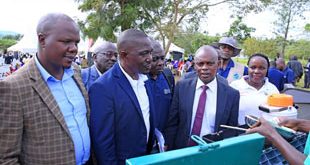
Kampala, Uganda | THE INDEPENDENT | A recent National Social Security Fund- NSSF beneficiary survey report indicates that savers are spending their benefits on non-income-generating expenses, such as education, constructing residential homes, and acquiring land.
According to the report, the expenditures come at the expense of ensuring a decent standard of living after retirement, which contradicts the primary purpose of the benefits.
The quantitative report, aimed at assessing the impact of benefits on the lives of savers, was conducted among a sample of 1,129 savers out of a total of 72,713 retirees and mid-term access beneficiaries. Among the sampled group, 33 percent had received mid-term benefits, 25 percent age benefits, 18 percent exempted benefits, 16 percent withdrawal benefits, 7 percent invalidity benefits, and 1 percent immigration grant.
According to the report, only 11 percent of the beneficiaries invested in income-generating activities such as business, agriculture, trading, services, manufacturing, or related ventures, while a significant 40 percent primarily focused on non-business expenditures.
“These figures illustrate that there is still much to do in preparing savers on how to effectively utilize their benefits for their intended purpose. While NSSF has several programs aimed at assisting in this regard, there is a need to intensify and scale up training efforts to reach a larger group of our members,” said Patrick Ayota, the NSSF Managing Director.
The report also highlights a lack of adoption of financial instruments as investment vehicles among savers who opt for income-generating ventures, a trend that Ayota believes should be addressed given their potential to provide continued income with low risk.
Findings further indicate that a significant proportion of beneficiaries, especially those aged 56-60 years, have more than four dependents, some of whom are still in school.
Additionally, up to 60 percent of retirees are still in full-time employment in secondary jobs to supplement their income and support their dependents.
“Retirees continue to bear immense responsibility for dependents well into retirement. As a result, many choose to continue working to make ends meet; 63 percent of beneficiaries remain in active employment, with 45 percent of those aged 50 and above working full or part-time,” reads part of the report.
The survey report also identifies business ventures as less significant among retirees’ survival options, with only 18 percent relying on business income for support. This underscores the need for a shift towards embracing entrepreneurship as a means of financial security during retirement.
*****
URN
 The Independent Uganda: You get the Truth we Pay the Price
The Independent Uganda: You get the Truth we Pay the Price


